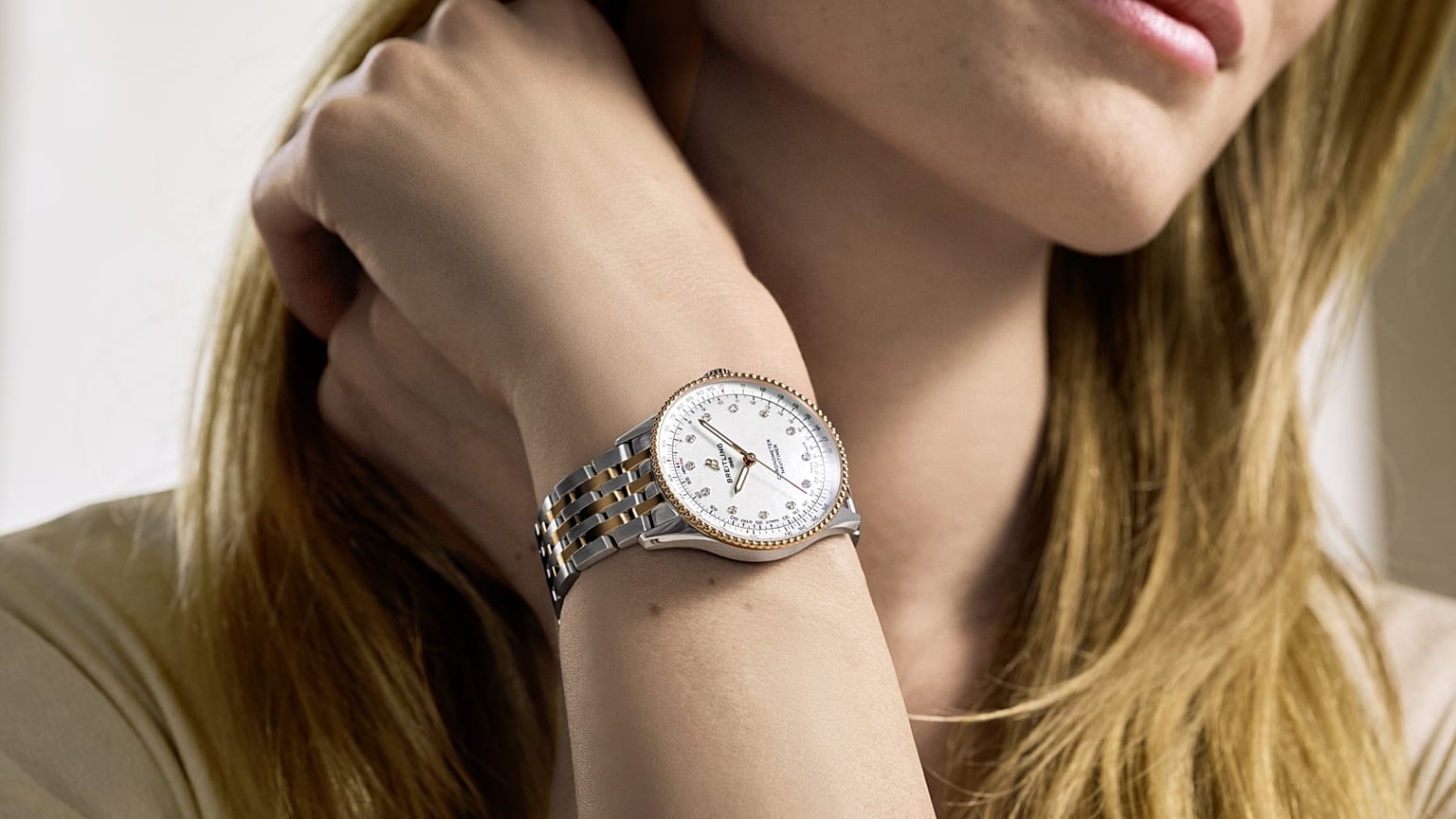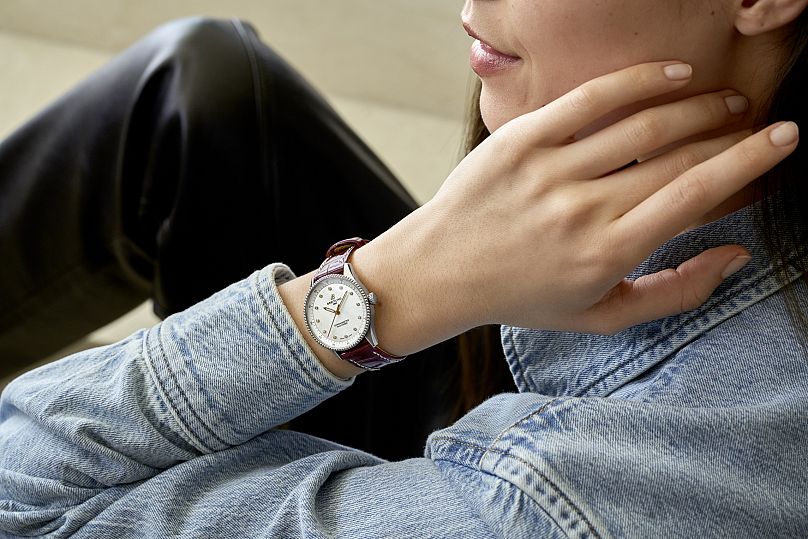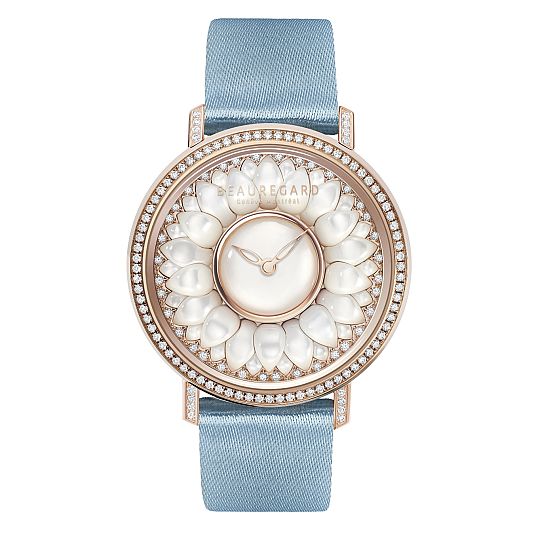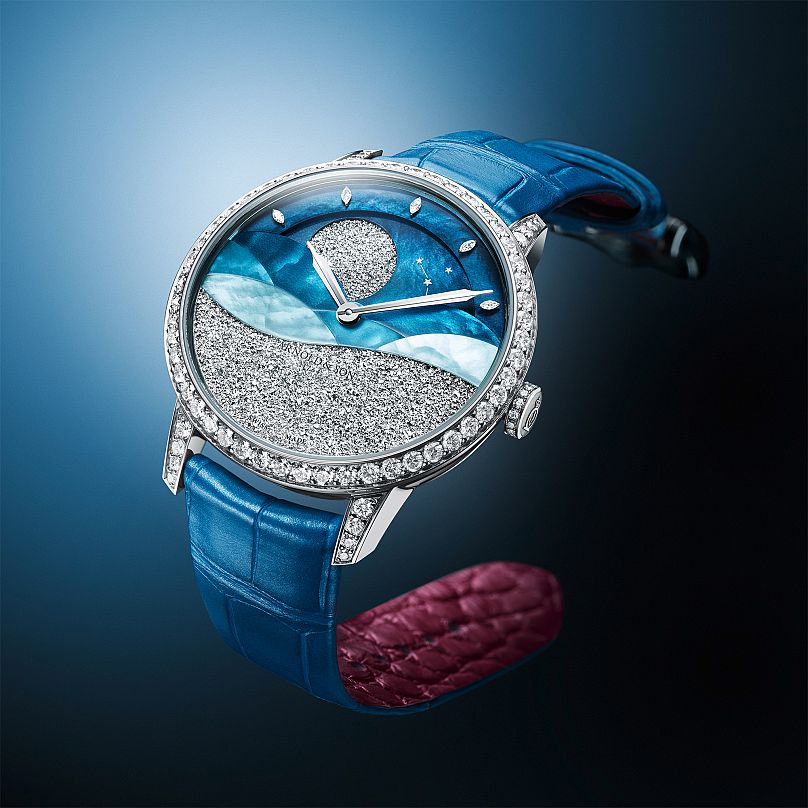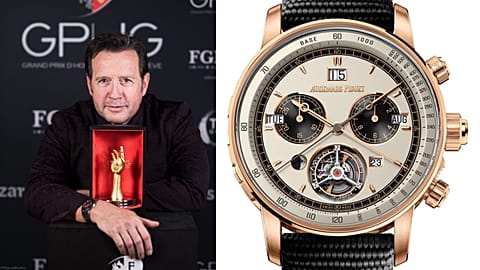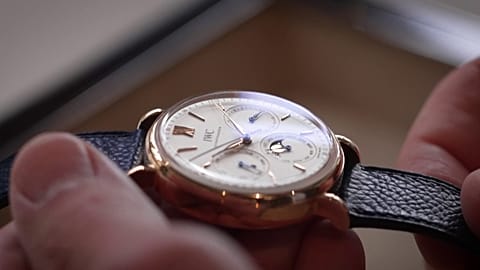Despite women owning and wearing watches since the 19th century, it’s still a sector that’s heavily focused on the male market. That, however, is changing.
A Deloitte report on the Swiss watch industry released in October 2022 found that 49% of brands surveyed said they were expanding their range of female watches from a design perspective and one-third plan to offer additional sizes to appeal to female watch wearers.
While there is no practical need for watches to be gendered, women’s watches tend to feature smaller faces, better suited to people with smaller wrists, and more stereotypically feminine and jewellery-like designs.
One brand looking to attract more female consumers is Breitling, famous for its Navitimer, first produced for pilots in the 1950s, and its Top Time watch, gifted to James Bond in the 1965 film Thunderball.
Historically, its marketing has targeted men with women often used as scantily clad props until 2018 when CEO Georges Kern called those tactics "no longer suitable and do not reflect values of today’s society” in an interview with German newspaper SonntagsZeitung.
In September, it launched its iconic Navitimer in a 32mm and 36mm diameter style, its smallest to date, with a campaign fronted by actress and brand ambassador Charlize Theron.
Kern says that Breitling is aiming to increase its percentage of sales to female customers to 30% of all sales. “There's no indication whatsoever that suddenly women are buying more watches than previously. What you have though, are brands who are much stronger in female or in male products than others. We are a male brand. Our female business is growing, but I don't think it will be 50/50 in the future,” he says.
This one is for the ladies
Beauregard, one of the only independent watchmakers that specifically caters to women, is nominated in the Ladies' category at this year's Grand Prix d'Horlogerie de Geneve (GPHG), the watch industry's most lauded awards taking place on 9 November.
Founder Alexandre Beauregard launched the brand's first watches in 2018 after many years of development, initially starting with watches aimed at men but soon finding his passion lay in more feminine designs. "I did a full collection for men. we had the website ready, we had the photo shoot, we had 10 watches but I was not happy with it, so l shelved it," says Beauregard. "I started working on our Dahlia watch, with petals all around (the dial). That very round, flower shape; I wanted to do those kinds of shapes. It's the stones, it's the shapes, it's the way they work together. And of course, it's very feminine.
Despite the pastel colours, flower motifs and gem-encrusted designs Beauregard has become known for, it has received requests for a men’s range.
“Men are becoming more comfortable with jewellery,” Beauregard says. Actor Austin Butler and rapper Tyler the Creator are just a few of the famous men who have been spotted with watches designed for women on their wrists recently.
Beauregard presented a prototype of a men’s style to select clients this summer and already has seven on reserve. While the brand hasn’t unveiled the watch more widely, Beauregard did share some of the details about the watch: “It's colourful. You have topaz, fire opal, mother of pearl. You say those stones and you think about women’s watches. I have a little challenge with myself, I want to present that watch at the GPHG in the Jewellery category. It's very rare that a men's watch is selected in that category.”
While the awards might distinguish between ladies’ and men’s styles, and it’s common for brands and retailers to do the same, there’s an argument for abolishing gender labels for watches altogether.
Limiting labels
Nathalie Veysset, cofounder of WatchFemme, a Swiss non-profit association on a mission to promote gender inclusivity in the watch world for consumers and industry professionals, believes categorising watches in this way is too limiting.
“It doesn't mean that we cannot have masculine and feminine, it's just that sometimes the labels remove the appeal just because our culture teaches us that, as a woman, we should behave a certain way and as a man we should behave another way. It's a pity because, at the end of the day, you like what you like,” Veysset says.
In Deloitte’s 2022 Swiss watch report less than half (45%) of female consumers surveyed said they preferred the design of female watches and just 22% said they preferred the size of female watches. Just over a quarter (26%) said they prefer unisex watches showing variety might be key to winning over the female market.
Deliberate decisions
Swiss watchmaker Arnold & Son is also nominated in the Ladies’ category at GPHG but as a brand it does not label its watches in this way. Bertrand Savary, president of Arnold & Son says this is a deliberate choice, “We are mentioning the collection and after that it is for the clients to decide if they want to buy a men’s or ladies’ product. In Asia they are wearing smaller sizes and sometimes they are less afraid than European or American men to wear some more feminine pieces.”
However, he believes the wider industry is not yet ready to scrap gender labels altogether. “A lot of women are not scared to wear a men's watch. But the opposite, in my opinion, is not true today. Men are still afraid to wear some more feminine products. So, having these two categories still makes sense.”
Savary credits much of the success of its ladies’ range to having a female watchmaker on the team, its senior product manager, Dominique Rytz Renaud. “As soon as we talk about a ladies’ product, (Dominique) is fully in charge. Over the years in the watch industry, it was a lot of male designers or male product managers, and they were just putting a few diamonds on the bezel and reducing the size and considering that it's a ladies’ model, but I think that women are expecting more than that.”
Appealing to all genders is key to future growth opportunities for luxury watch brands but to do so they must listen more closely to their female consumer base and try to attract more women into the industry. American careers platform Zippia found that in 2021, less than 17% of watchmakers were women.
Veysett says: “(Brands should) open their minds and listen to what people really want. Some are starting to create opportunities to meet with female collectors and to listen to them and it's creating a lot of feedback. They could also open the doors and have more women in the product development area because that would also bring a different view. It’s about creating more diversity, bringing more imagination, and having something more interesting at the end of the day for everyone. Not only for women, but also for male collectors.”
You can follow the entire the GPHG award ceremony in Geneva on our livestream here from 1815 CET on 9 November.















